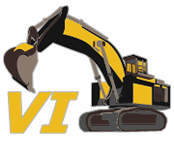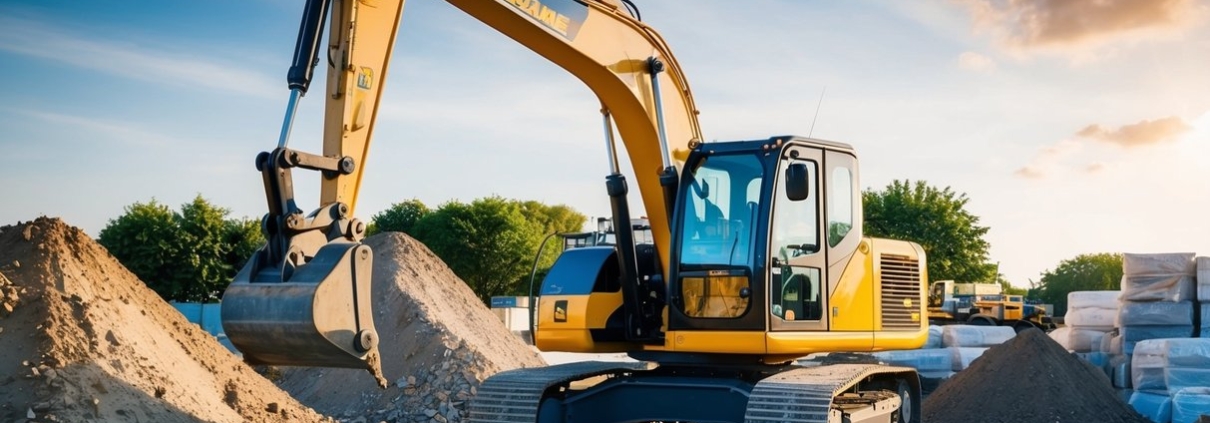Choosing the Right Excavator for Your Construction Project
Choosing the Right Excavator for Your Construction Project: A Contractor’s Guide to Digging Success
We’ve been in the excavator business for years, and we know how crucial it is to pick the right machine for your construction project. It’s not just about grabbing the biggest excavator you can find – that’s a rookie mistake. The key is matching the excavator’s size and capabilities to your specific job requirements.

Selecting the perfect excavator involves weighing several factors. We consider the project’s scale, the terrain you’re working on, and how much mobility you need. A mini excavator might be perfect for tight urban spaces, while a standard 20-ton beast could be what you need for heavy-duty earthmoving.
We’ve seen projects succeed or fail based on excavator choice. That’s why we always ask our customers about their depth requirements, site conditions, and budget constraints. It’s all about finding that sweet spot where power meets efficiency. Trust us, when you’ve got the right excavator, your project will run smoother than a well-oiled machine.
Understanding Excavator Types and Their Uses
Excavators come in various sizes and types to tackle different jobs. We’ve got machines for everything from backyard landscaping to major mining operations. Let’s break down the main categories and what they’re best suited for.
Mini Excavators for Landscaping and Residential Projects
Mini excavators are our go-to for tight spaces and light work. These compact machines typically weigh between 1-5 tons and pack a punch for their size. We use them all the time for digging small foundations, landscaping, and utility work in residential areas.
Their small footprint means they can squeeze through gates and work in backyards without tearing up lawns. Most mini excavators have rubber tracks, so they’re gentler on finished surfaces. They’re perfect for digging trenches, planting trees, or even breaking up small concrete slabs with a hydraulic hammer attachment.
Midi and Standard Excavators for Versatility in Medium Projects
When you need more muscle, midi and standard excavators are the workhorses of construction sites. Midi excavators fall in the 5-10 ton range, while standard models can go up to 45 tons. These machines are versatile enough for most commercial construction and infrastructure projects.
We use midi excavators for tasks like digging basements or larger foundations. They’ve got the reach and power to handle serious earthmoving but can still maneuver around a busy job site. Standard excavators step it up with deeper digging depths and higher lifting capacities. They’re great for road construction, larger building projects, and even some demolition work.
Large Excavators for Mining and Major Construction Sites
For the biggest jobs, we bring out the heavy hitters. Large excavators, sometimes called mass excavators, are monsters that can weigh over 100 tons. These beasts are built for high-production work in quarries, mines, and massive construction projects.
We’ve seen these giants move mountains of earth in open-pit mines. Their massive buckets can scoop up tons of material in a single pass. On major construction sites, they’re used for bulk excavation, like clearing large areas for foundations or creating artificial lakes. Some models are specially designed for demolition, with long-reach arms that can take down multi-story buildings safely and efficiently.
Evaluating Excavator Specifications for Efficiency and Productivity
When picking an excavator, we need to look at the nitty-gritty details to make sure it’ll get the job done right. Let’s break down the key specs that’ll impact your productivity on the worksite.
Power and Performance Metrics
We always check the engine specs first. Horsepower is crucial – more horses mean more muscle for tough digging. A 21-ton excavator might pack around 150 HP, while a 35-tonner could hit 270 HP or more.
Bucket capacity is another biggie. Larger buckets move more dirt per scoop, but they need more power to operate efficiently. We typically see buckets ranging from 0.5 to 3 cubic yards.
Don’t forget about digging depth and lift capacity. These specs tell you how deep you can dig and how much weight you can lift. A medium excavator might reach depths of 15-20 feet, while larger models can go 30 feet or deeper.
Fuel efficiency matters too. New models often have eco-modes that can cut fuel use by up to 25% without sacrificing much power.
Impact of Size and Weight on Maneuverability
Size matters in tight spaces. We’ve got mini excavators under 10,000 lbs for cramped urban jobs, and behemoths over 180,000 lbs for major earthmoving.
Operating weight affects ground pressure and stability. Heavier machines are more stable but can damage soft ground. Here’s a quick breakdown:
- Mini: 0-6 tons
- Compact: 7-10 tons
- Mid-size: 11-25 tons
- Large: 26-40 tons
- Very large: 40+ tons
Tail swing is crucial for tight spots. Zero tail swing models are great for working near buildings or in traffic lanes.
Attachment Options and Customization
Versatility is key in today’s market. Most excavators come with a standard bucket, but we can fit them with all sorts of attachments:
- Hammers for breaking concrete
- Grapples for demolition work
- Augers for drilling holes
- Thumbs for grabbing and sorting
Quick couplers let operators swap attachments fast, boosting productivity. Some newer models have computer systems that recognize attachments and adjust hydraulic flow automatically.
We always recommend thinking about future jobs when choosing attachments. A versatile machine with the right add-ons can tackle a wide range of projects, saving you money in the long run.
Practical Considerations for Project and Terrain Requirements

When choosing an excavator, we need to consider the specific demands of our construction site and project timeline. These factors will guide us in selecting the right machine for optimal performance and efficiency.
Adapting to Different Construction Environments
We’ve seen all kinds of job sites, and each one presents unique challenges. Rocky terrain? We’ll want a robust excavator with high ground clearance and durable tracks. Soft, muddy ground? Wide tracks or even amphibious models might be the ticket. For urban projects with tight spaces, compact excavators are our go-to.
Slope stability is crucial too. We always check the maximum operating angle to ensure safe operation on inclines. In areas with strict noise regulations, we opt for electric or hybrid models to keep the neighbors happy.
Selecting Based on Project Scope and Timeline
The size of the job and how fast we need to get it done play a big role in our excavator choice. For large-scale projects with tight deadlines, we typically go for heavy-duty machines with high digging forces and quick cycle times.
Smaller jobs or those with extended timelines might be better served by more versatile, mid-sized excavators. These can handle a variety of tasks without breaking the bank on fuel or transportation costs.
We always consider attachment compatibility too. If we need to switch between buckets, hammers, and grapples, we make sure our chosen excavator can handle the hydraulic demands of these tools.
Financial Factors in Excavator Acquisition
Choosing the right excavator involves more than just specs. We’ve got to consider the financial side too. It’s all about getting the most bang for your buck while meeting your project needs.
Balancing Cost-Effectiveness with Operational Needs
When looking at excavators, we always start with the budget. But it’s not just about the sticker price. We factor in fuel efficiency, maintenance costs, and productivity.
A bigger machine might cost more upfront, but if it gets the job done faster, it could save money in the long run. We’ve seen Caterpillar models like the 320 strike a good balance for mid-sized projects.
Don’t forget about resale value. Popular brands like Cat hold their value better, which matters if you’re planning to sell down the line.
Pros and Cons of Buying Versus Renting Equipment
Buying an excavator is a big investment, but it can pay off for frequent use. We often recommend it for companies with steady workloads.
Pros of buying:
- Lower long-term costs
- Always available when you need it
- Can be a business asset
Cons of buying:
- High upfront cost
- Responsible for maintenance
- Risk of downtime if it breaks
Renting can be smart for short-term projects or trying out different models. It’s less commitment and gives you flexibility.
We’ve found that mixing owned and rented equipment often works best. Own your core fleet and rent specialty machines as needed.
For those on a tight budget, we suggest looking into second-hand machinery. You can find some great deals on used excavators that still have plenty of life left in them.






